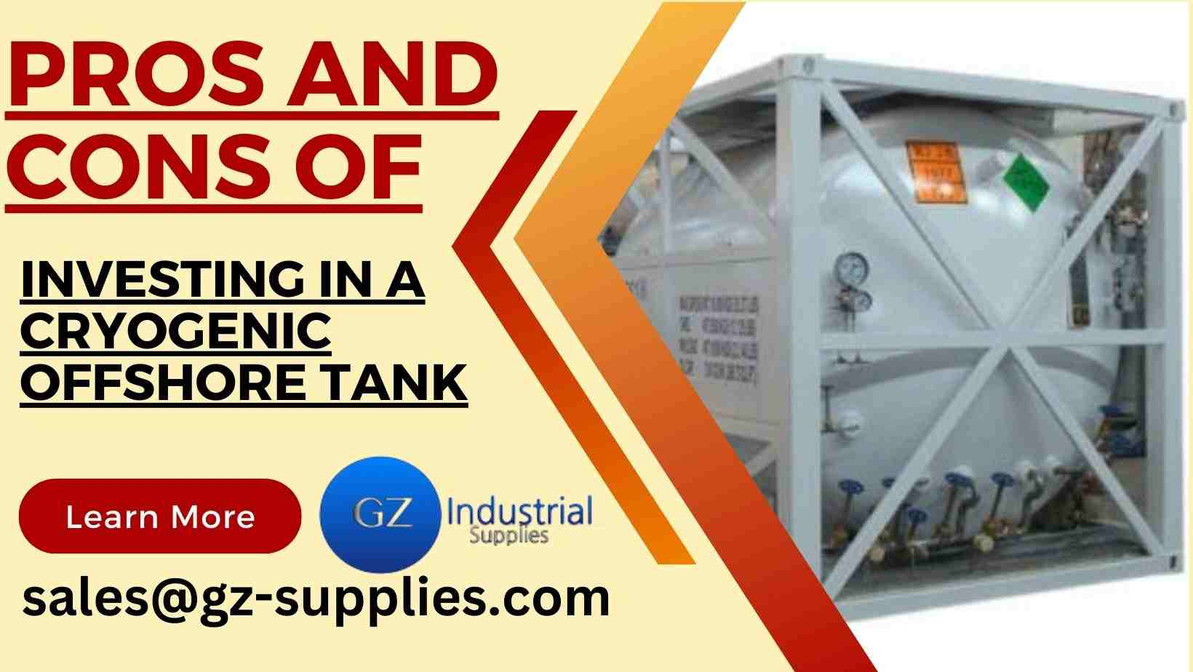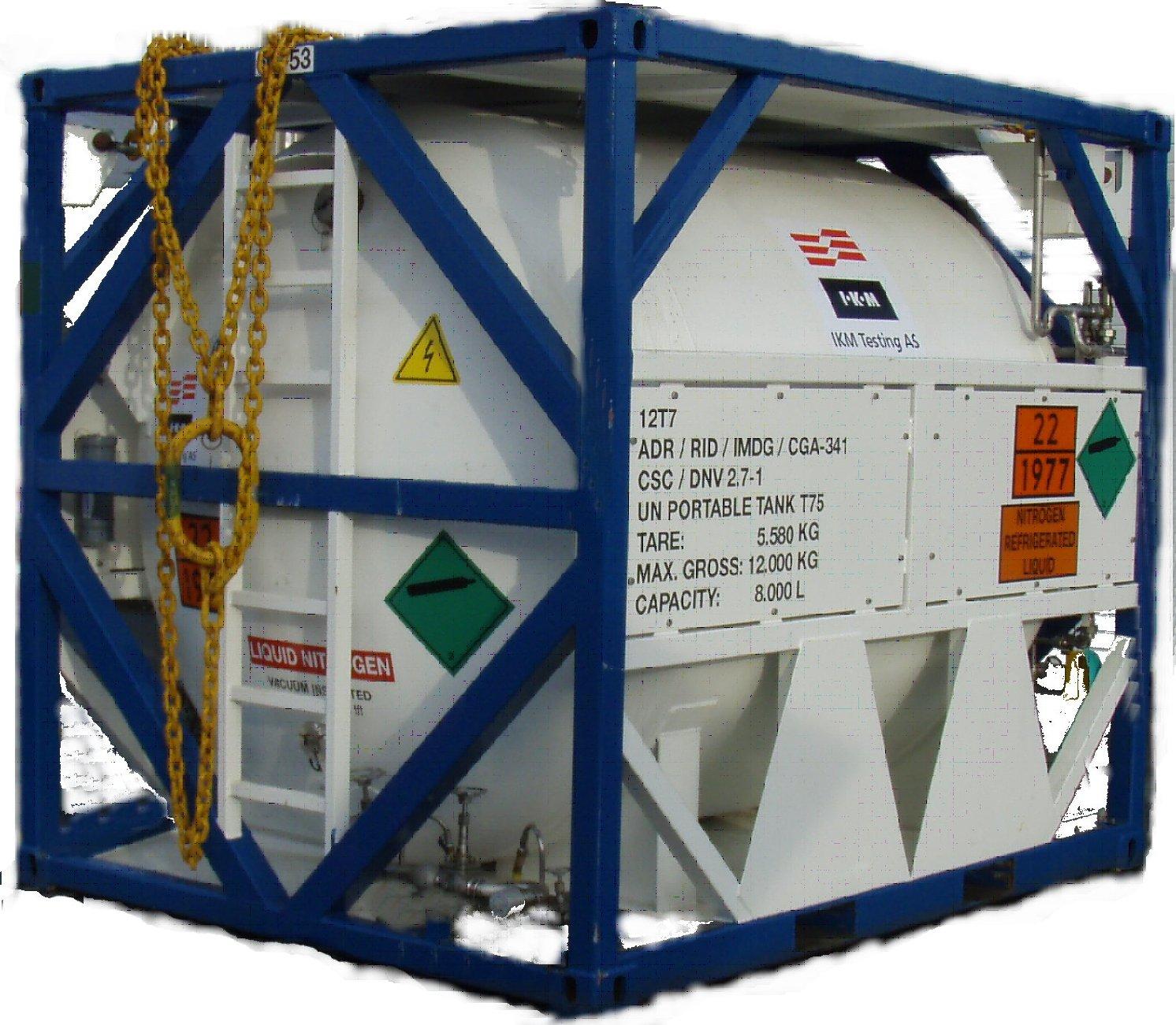Pros and Cons of Investing in a Cryogenic Offshore Tank
A cryogenic offshore tank is an insulated storage container that is used to house pressurized nitrogen. It keeps the nitrogen at its required temperature, Investing in a cryogenic offshore tank for nitrogen is an important decision that shouldn't be taken lightly. These large-scale investments in specialized equipment like the cryogenic tank can provide large-scale advantages and help to increase efficiency and production. The first advantage of investing in a cryogenic offshore tank is the energy savings associated with it. Cryogenic tanks are extremely efficient at storing liquid nitrogen and can supply large industries with high volumes of nitrogen at a low rate.
This makes them well suited for long-term storage and lower overall energy costs than traditional methods of supplying liquid nitrogen. Despite these advantage there are also many potential drawbacks to consider before making this kind of investment such as Maintenance precautions as they must be regularly checked for any tiny imperfections that could lead to a dangerous leak.
In this article, we'll look at the pros and cons of investing in a cryogenic offshore tank for nitrogen. We’ll discuss the potential savings and benefits that come with investing in these specialized tanks, as well as the downsides that might come with them. We’ll also look at other alternative options to consider before making a final decision.
By the end, you should have a good understanding of whether or not investing in a cryogenic offshore tank for nitrogen is right for you.
What Is a Cryogenic Offshore Tank?
A cryogenic offshore tank is an insulated storage container that is used to house pressurized nitrogen. It keeps the nitrogen at its required temperature, typically -320° Fahrenheit. This system allows for the safe, efficient and economical storage and transport of liquid nitrogen while also providing a reliable reserve of fuel in environments that are difficult to access.
The tanks are designed to be highly durable and constructed with materials that can withstand extreme temperatures, harsh environment conditions and industrial processes. They also have safety features such as built-in pressure relief valves, automatic pressure shut-off systems and anti-freeze alarms to help ensure the safety of personnel onsite.
Cryogenic offshore tanks come in a variety of sizes depending on the application, ranging from portable cylinders to large tanks with capacities up to 150 million gallons. They are also customizable, allowing for pressure adjustments to meet specific requirements. In addition, they can be integrated with other equipment for enhanced productivity and efficiency in operations.
Advantages of Investing in a Cryogenic Offshore Tank
Investing in a cryogenic offshore tank for nitrogen is a popular choice for providing reliable, low-cost liquid nitrogen to many industries. There are several advantages to investing in this type of tank.
The first advantage is the cost-effectiveness of the tank. The tank has no moving parts and is relatively simple to install and maintain, meaning there is less need for maintenance costs. Additionally, the lifespan of these tanks can be up to 15 years with proper care.
The second advantage of investing in a cryogenic offshore tank is the energy savings associated with it. Cryogenic tanks are extremely efficient at storing liquid nitrogen and can supply large industries with high volumes of nitrogen at a low rate. This makes them well suited for long-term storage and lower overall energy costs than traditional methods of supplying liquid nitrogen.
Finally, the third advantage of investing in a cryogenic offshore tank is its environmental friendliness. Unlike traditional sources of liquid nitrogen which can emit harmful pollutants, these tanks use only natural resources to create their supply, making them much more eco-friendly than other sources of liquid nitrogen.
Cryogenic Offshore container 8000L capacity
Disadvantages of Investing in a Cryogenic Offshore Tank
Investing in a cryogenic offshore tank for nitrogen comes with some drawbacks, such as the fact that these tanks require specialized maintenance and intense regulations to meet safety standards.
1. Maintenance
Because these tanks are built to store extremely low temperatures and contain nitrogen at high pressure levels, they must be regularly checked for any tiny imperfections that could lead to a dangerous leak. Additionally, tanks must be often recalibrated and serviced in order to maintain the low temperatures required. This requires specialized knowledge and expertise, not just of the tank but also its environment - such as temperature fluctuations in the surrounding area - along with having an adequate supply of nitrogen to keep your equipment running adequately.
2. Regulations
Cryogenic offshore tanks must also meet certain regulations which can be time consuming and expensive. Example of cryogenic tank regulation bodies include the International Maritime Organization(IMO) and the aim of the Code is to provide an international standard for the safe carriage by sea in bulk of liquefied gases and the substances. It is important to research regulations of any potential location before investing in a cryogenic offshore tank in order to avoid costly delays or fees later on.
Considerations to Make When Choosing a Cryogenic Offshore Tank
When considering investing in a cryogenic offshore tank for nitrogen, it is important to consider several factors.
1. Capacity
The capacity of the tank is a crucial consideration, as the tank must meet your needs in terms of servicing your production facilities. It is important to choose a tank with both enough storage for your current needs and some room for growth.
2. Location
The location of the tank is also very important since it needs to be placed near your place of business or production facility. If possible, you should choose a location that allows for easy transport of nitrogen-containing materials and easy access to maintenance and repair services.
3. Cost
The cost of purchasing and installing a cryogenic offshore tank should also be a factor in your decision making process. You should research pricing models and make sure they fit within your budget before committing to any purchase.
By taking these factors into consideration when choosing the right cryogenic offshore tank, you can ensure that you get a tank that meets both your current needs and allows for future growth.
Cost-Effective Benefits of Investing in a Cryogenic Offshore Tank
When considering the cost-effective benefits of investing in a cryogenic offshore tank, it's important to note that nitrogen is one of the most cost-effective ways to produce power. In addition to its relatively low production costs, nitrogen also offers several other long-term benefits.
1. Consistent Supply
Once you have invested in a cryogenic offshore tank for nitrogen, it's capable of supplying you with an ongoing supply that is both reliable and consistent. This means that you don't have to worry about fluctuations in price or supply due to external factors such as weather or market demand.
2. Reduced Dependence on Imports
Cryogenic tanks also reduce dependence on imports of Nitrogen gas, which can be a costly and unreliable source. By establishing your own supply, you no longer have to worry about sourcing Nitrogen from foreign countries, thus reducing your risk of becoming susceptible to unstable political climates.
3. Increased Efficiency
Finally, investing in a cryogenic offshore tank will increase efficiency in terms of cost and speed of operation. This is because the system can be quickly and efficiently set up using existing infrastructure such as pipelines and storage tanks, meaning the process can be completed quickly without additional costs. In addition, once the system is set up, it will remain operational for years without needing increased funding for repairs or maintenance.
Maintenance and Safety Requirements for Using a Cryogenic Offshore Tank
When investing in a cryogenic offshore tank for nitrogen, it is essential to consider the maintenance and safety requirements necessary to ensure proper use of the tank.
Maintenance Requirements
Maintaining a cryogenic offshore tank requires periodic inspections and scheduled updates, depending on the environment in which it is used. The frequency of these inspections and updates depends on factors like the type of tank, its size, its material composition and any additional equipment associated with it. These maintenance requirements range from basic cleaning protocols to more complex procedures such as pressure testing and non-destructive testing.
Safety Protocols
Safety protocols are critical when handling cryogenic substances at low temperatures. These protocols include wearing protective gear such as insulated gloves and safety glasses, as well as paying attention to environmental conditions that may affect the performance or operation of the tank. Furthermore, personnel who have not been trained in operating a cryogenic offshore tank should not be allowed near the unit.
By following all necessary maintenance and safety requirements when using a cryogenic offshore tank for nitrogen, you can ensure that your unit operates at maximum efficiency while maintaining an optimal level of safety for your personnel and the surrounding environment.
Conclusion
In conclusion, investing in a cryogenic offshore tank to store nitrogen has its pros and cons and requires careful consideration taking into account the safety and economic factors associated. It is evident that choosing the right tank and an experienced, reliable operator is essential in order to meet the necessary health and safety regulations, while also ensuring a cost-effective solution.
it is important to remember that the investment must be justified by the intended cost savings, and the tank should be operated in accordance with the latest safety and regulatory guidelines.
Contact GZ Industrial Supplies for a free quote
Recent Posts
-
How to Choose the Right Industrial Cleaning Service Provider
Key takeawayThoroughly Assess Your Needs and Providers: Understand your specific industrial cle …Jul 26, 2024 -
Floor Paint Maintenance: How to Keep Your Floors Looking Their Best
Maintaining your painted floors is essential for preserving their beauty and extending their lifespa …Jul 25, 2024 -
The Best Floor Paint for Different Types of Flooring
When it comes to revitalizing your home's flooring, choosing the right paint can make all the d …Jul 19, 2024



